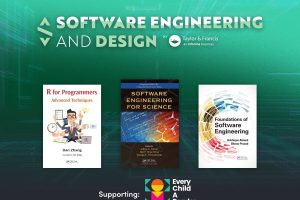In a short period, online learning has reached all traditional spheres of education and learning, from the classroom to the workplace. Effective content creation can help students feel engaged and get the most out of their learning activity. Let us further understand how to create engaging learning content that makes learning more interesting and human.
Know Your Target Audience
Creating content that meets your audiences’ expectations is about knowing who they are and what they need. This approach helps them successfully manage their learning goals and benefit from your platform. Customizing content to suit multiple learning styles, such as visual learning or for those who enjoy kinesthetic approaches, can lead to a more open and inclusive learning environment—some platforms like cornerstone on demand offer this. Surveys and interviews can help course creators meet learning needs.
Furthermore, dividing your audience based on their previous knowledge, role in the job, and learning objectives results in more personalized learning outcomes. For instance, an introductory course should not be too comprehensive or in a language similar to content developed for an advanced professional course. Learning about audiences’ demographics and other variables like age, culture, and technological competence can help you suitably create and present the material. This makes the content relevant to students. It can help increase student motivation and satisfaction.
Incorporate Interactive Elements to Enhance Your Content
Utilizing tools such as quizzes and soft skill development polls can be a great way to get learners involved in the training and make the learning process fun and interesting. At the same time, simulations can support a good learning strategy. They act as interactive aids and maintain students’ interest in the course. They also make the learning activity enjoyable and allow students to learn more about specific areas.
Consider Including Different Types of Media Sources
Media (videos, animations) enhances learning by addressing different learning styles and stimulating engaged learners without overwhelming them with volumes of text. Excessive text can impact the learning experience and create disinterest, particularly among people with short attention spans. Adding multimedia elements to enrich and not distract from the main educational content is crucial.
The learning environment and effective communication are essential to ensuring students understand the concepts well and find them engaging. Organizations can meet their learning objectives through quality visuals and audio, boosting relevance and engagement.
Another good practice is to use interactive videos, where student input is also considered. This approach promotes problem-solving and active learning. Infographics and data visualization help break down complex data. By employing uniform brand colors, fonts, and imagery across all media platforms, course creators can offer a consistent experience that helps hold their audience’s attention. However, using too many media types at once is not recommended. This can lead to fatigue instead of engagement. Thoughtful integration of every element is key!
Boost Accessibility
Course design must consider learner needs. Only through this can online learning be made accessible and available to everyone. This means ensuring inclusive design, with features like video captions and descriptive text for images for people with disabilities. By following the guidelines and making content learner-friendly, creators can capture audiences’ attention and show how committed they are to simplifying education for all.
Accessibility also means creating responsive, mobile-friendly websites or platforms. Many learners use mobile phones or tablets to learn. Hence, educational materials must be visible on various devices and screen sizes. Navigation must be easy on every device. Structured layouts and easy-to-read content can help this cause. Visually appealing websites or web pages can give organizations an advantage. Offline access (like downloadable PDFs or audio courses) helps learners gain knowledge despite fluctuating internet. This way, they can keep up with the courses being delivered on your platform.
Focus on Learning Objectives
Setting clear learning objectives is the cornerstone of good courses. It ensures the content is aligned with the expected results and provides students with a connected teaching/learning situation. It additionally allows entities to offer coursework in a way that enables outcomes to be quantified, allowing learners to determine their progress.
Employ Storytelling Techniques
Stories can deliver information to learners in a way that feels much more engaging and memorable than regular teaching methods. This helps them relate to, understand, and retain knowledge as the lessons come to life through characters and real-life scenarios instead of dry or abstract concepts. This can prompt learners to explore real-world concepts using what they have learned.

Promote Employment Opportunities
In group learning, students learn the spirit of cooperation. Students communicate, collaborate, and share their knowledge, enabling them to learn from diverse experiences and perspectives. Group learning enhances learning and encourages essential communication and teamwork abilities, as well as creating an inclusive climate. This results in high engagement by allowing learners to voice their opinions.
Monitor Learning Results and Enhance
Continuous monitoring and adjustments can further promote the development of valuable e-learning content. Reflecting on what learners reported about their experiences and struggles can help course creators improve, add, refine, or modify their content. Frequent revisions to course materials help keep up with the latest trends and developments. It also enables organizations to ensure relevance and engagement. Learners feel valued when their input is incorporated into the course content. In the long run, it improves the content and builds a bond with audiences.
Another vital instrument to measure improvement would be A/B testing. It can help you test the presentation of content to identify which format gets you the highest engagement and knowledge retention. Tools with analysis capabilities can also give you valuable data such as the number of students completing a course, average time required to complete a lesson, quiz results, etc. By analyzing this data, content creators can see where boredom starts to set in or the points that learners find tedious or bewildering, making it possible for content creators to improve and optimize future courses. Creating an environment for continuous improvement is the greatest defense against static or ineffective online learning.
Conclusion
Creating eLearning content requires strategic planning and deployment methods to keep learners engaged. To maintain learner participation, it is necessary to outline the audience profile, create engaging and relevant content based on their needs, and combine it with multimedia components. When developing online learning content, it is advisable to focus on accessibility and availability. Setting learning targets, imparting knowledge using storytelling techniques, and encouraging interaction can help enhance learning outcomes.






 Your total news and information resource for all things Science, Technology, Engineering / Mathematics, Art, and Medicine / Health.
Your total news and information resource for all things Science, Technology, Engineering / Mathematics, Art, and Medicine / Health.
Leave a Comment